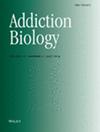Deep Transcranial Magnetic Stimulation in Patients With Opioid Use Disorder: A Double-Blind, Placebo-Controlled Randomized Trial
Abstract
Opioid use disorder (OUD) is a chronic, relapsing brain disorder. The efficacy of brain stimulation methods in the treatment of OUD has been increasingly investigated. However, the efficacy of deep transcranial magnetic stimulation, namely, wide-volume TMS, in the treatment of OUD has not been investigated. The aim of this randomized, double-blind, sham-controlled add-on study was to evaluate the efficacy of wide-volume TMS using a double-cone coil in participants with OUD. A total of 55 OUD patients were recruited and randomized to receive either active or sham TMS. Active wide-volume TMS treatment was applied to the left dorsolateral prefrontal cortex (DLPFC) in the active TMS group using a double-cone coil, twice daily for 2 weeks, at a frequency of 10 Hz. Sham TMS was also applied to the same region in the placebo group using a placebo coil. Opioid Craving Visual Analogue Scale (OC-VAS), Hamilton Depression Rating Scale (HDRS), Hamilton Anxiety Rating Scale (HARS) and Barratt Impulsiveness Scale-11 (BIS-11) were measured before treatment, at the end of treatment, and 2 months after treatment. A total of 21 patients from the active TMS group and 19 patients from the sham TMS group completed the study. Although the active TMS group exhibited more reduction in craving and a less pronounced increase in buprenorphine-naloxone dose during the treatment period compared to the sham group, these differences did not reach statistical significance. This study suggests that while wide-volume TMS using a double-cone coil applied to the left DLPFC was well tolerated, it did not produce statistically significant improvements in craving, depression, anxiety, or impulsivity when compared to the sham treatment. However, the observed trends warrant further investigation with larger sample sizes and refined protocols.
Trial Registration: This trial was registered at ClinicalTrials.gov (NCT06081985)


 求助内容:
求助内容: 应助结果提醒方式:
应助结果提醒方式:


